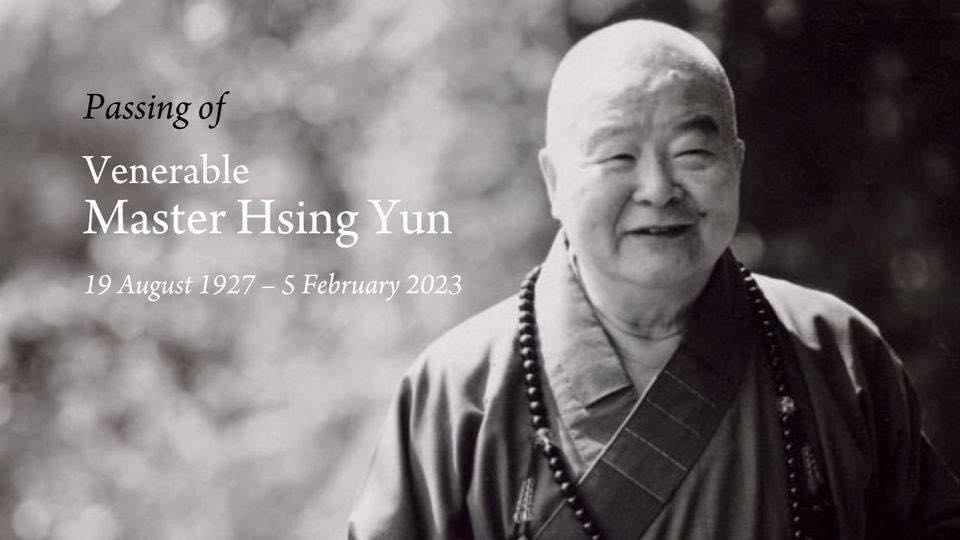The Buddhist world is commemorating the life of the late Master Hsing Yun, founder of Fo Guang Shan. He is one of the most influential Chinese Buddhist monastics in living memory. It is difficult to encapsulate the breadth of this single monk’s Dharmadhuta work. Anyone who has set foot in the 30-hectare monastic complex in Dashu Township, Kaohsiung County in Taiwan will be instantly struck by the scale of the place, with over 1000 monks and nuns, 1 million followers worldwide, and branches in about fifty countries as of 2017. (The New York Times) The branches’ proliferation is given various estimates, ranging between the numbers of 120, 150, 173, and even 200.
Master Hsing Yun amassed a great host of supporters, volunteers, and allies after he settled down in Taiwan in 1949. The staggering 1 million people (perhaps more by now) that count themselves his devotees were critical to expanding his network overseas, to countries that he had not even visited yet in his youth. This is on top of the substantial accomplishments by the Fo Guang Shan order in Taiwan: translation and publishing, Fo Guang University and Nanhua University, community and regular colleges, social and medical programs like orphanages, homes for the elderly, drug rehabilitation, and free medical clinics for remote villages, and Fo Guang Shan Buddha Museum.
Outside of Taiwan, the master’s objective was to build great centers of Buddhist congregating and community in countries around the world, some of which barely had any exposure to Buddhism at the time. While there are others, four of the largest and most famous temples are Nan Tien Temple in Australia, Nan Hua Temple in South Africa, Zu Lai Temple in Brazil, and Hsi Lai Temple in the US. Every temple, while individually governed by its own abbots and abbesses, engage in similar activities in the spirit of the late master’s vision.
Many of these complexes reflect the grandeur and generosity of the home temple in Taiwan. His philosophy of humanistic Buddhism, coupled with his endless drive and passion for the Dharma, provided the intellectual framework buttressing the physical structures of these now-famous landmarks. These temples and their local communities mutually reinforce one another: the former ensuring humanistic Buddhist teachings touch and benefit the lives of the latter, while the latter sustain the former’s relevance through active participation. This was exactly how Master Hsing Yun envisaged a flourishing future for Buddhism.
Nan Tien Temple
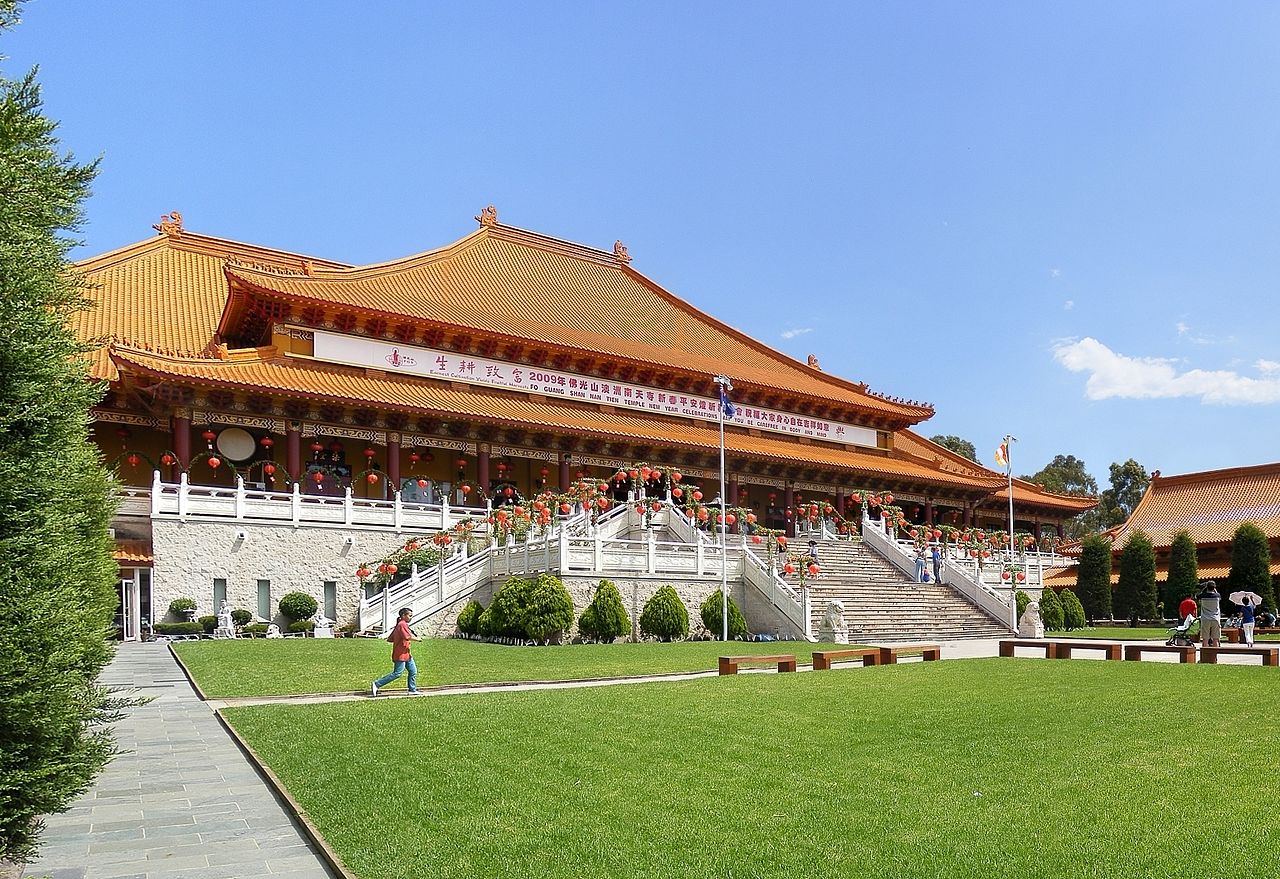
Founded in 1995, this temple in the Australian state of New South Wales stands 10 minutes south of Wollongong City and warm, sandy beaches. So famous is this temple in the Australian consciousness that the Wollongong tourism website touts it as the largest temple in the Southern Hemisphere. It was designed by Australian architectural firm Jones Brewster Regan and brings together a harmonious accord of traditional Chinese temple components and a semi-rural atmosphere. The temple overlooks two mountains: Mount Keira and Mount Kembla. The site was reputedly chosen by Hsing Yun due to its proximity to Mount Kembla, which looked auspiciously like a lion.
Highlights include the Pilgrim Lodge for retreats, the large prayer halls, an eight-level pagoda, and the adjacent Nan Tien Institute of Higher Education. Its specialties are postgraduate programs in Health and Social Wellbeing, Humanistic Buddhism and Mental Health, Applied Buddhist Studies, and Continuing Professional Development programs focused on meditation and mindfulness.
Nan Hua Temple
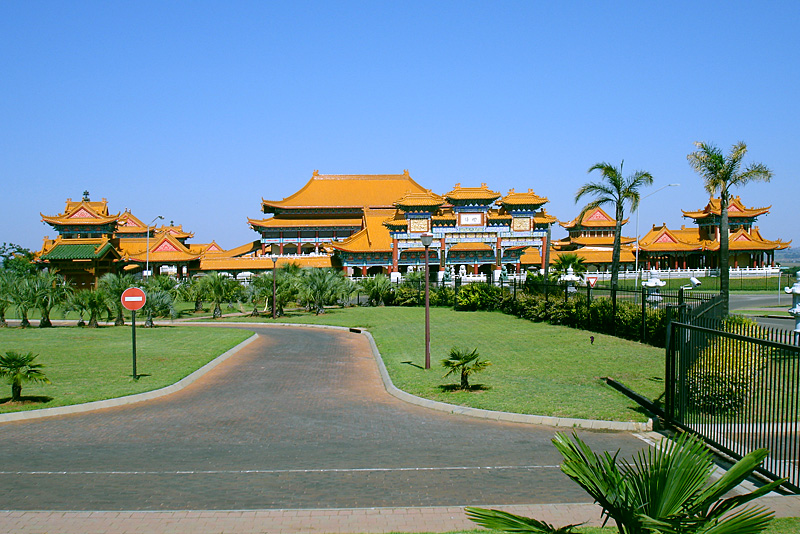
Nan Hua Temple was founded in 1992 at the Cultura Park suburb of Bronkhorstspruit. It, along with a Pure Land retreat center a distance away, serves as the Fo Guang Shan order’s South African headquarters and at 600 acres, is the largest temple complex in South Africa. The first abbot was Ven. Hui Li, himself well-known for his application of humanistic Buddhist ideals by spreading the Dharma in Africa and establishing Amituofo Care Centre in several countries on the continent.
The temple suffered an attempted terrorist attack in 2002, when a hard right militant group called the Boeremag snuck into the complex and planted a bomb in the basement of the main structure. The bomb went off prematurely, lightly injuring two staff members, but the 150 congregants at the time were unhurt.
Zu Lai Temple
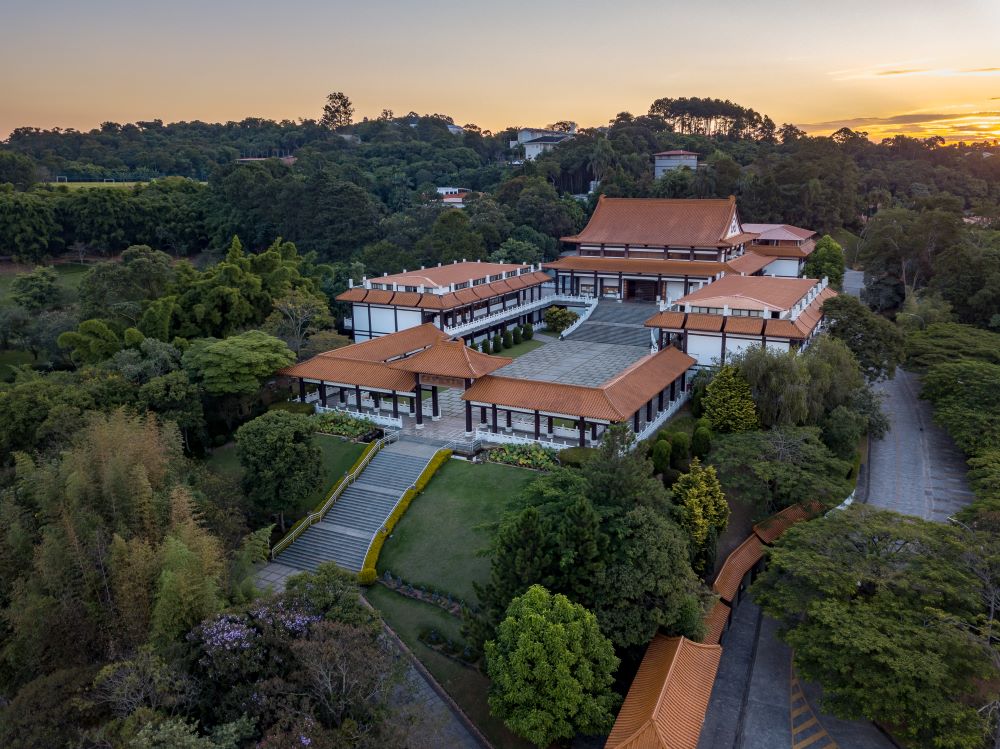
Initially established in 1992, the temple was expanded considerably in 2003 and is now considered the largest Buddhist temple in South America. Located in Cotia, a rural area of São Paulo, the 150,000 square meters Chinese-style complex (with over 10,000 square meters’ worth of construction) offers a large Zen garden, with a wooden bridge and a pond. As of 2015, the temple was receiving over 10,000 visitors each month, most of them from within Brazil (though the pandemic most likely reduced this number).
True to the humanistic Buddhist spirit, the temple established a marquee humanitarian initiative as well as a flagship educational project. The former was the Filhos de Buda project, established in 2003, to provide shelter and activities for impoverished slum children (who are vulnerable to drug dealers and crime) from the ages of 6 to 17, consisting of free supplementary courses in music, dancing, football, I.T., as well as meditation, Buddhism, and ethics. Scholarships are available for those that want to study at university. The latter educational initiative is the Zu Lai Buddhist Institute (Instituto Budista Zu Lai – IBZL) on the temple premises. Its one-month internship program immerse students in a meditative, monastic environment, introducing them to the tranquil alternative of Buddhist life and piety.
Apart from visiting homes for the elderly and orphanages, and the Institute also celebrates the Brazilian cultural festival Festa Junina by inviting invitations residents at local old-age homes, orphanages, children from cancer hospitals, and Filhos de Buda members to gather together for vegetarian food and play Buddhist themed games celebrating wisdom, compassion, and the innate goodness of the human spirit.
Hsi Lai Temple
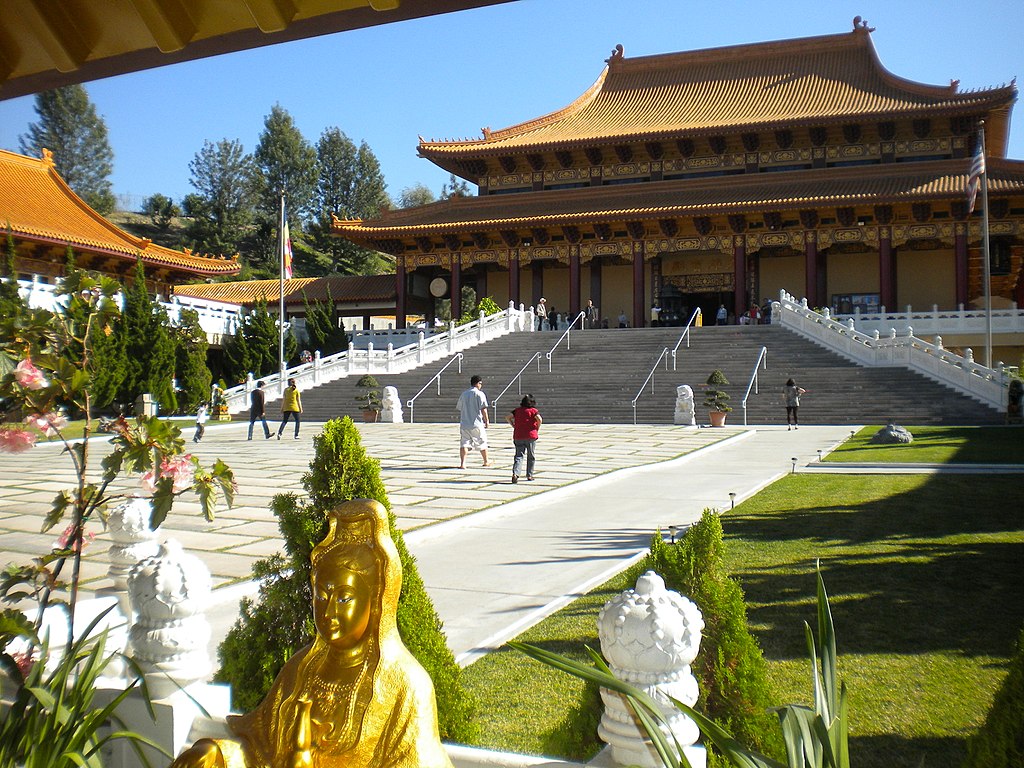
Of all the international branches of Fo Guang Shan, Hsi Lai Temple, founded in 1988, undoubtedly wielded the most influence historically. Built in the idyllic Hacienda Heights, California, this North American headquarters for the order was among the most difficult to establish. Anti-Chinese sentiments ran deep in Californian society, and as so often happens, religious structures with a distinct aesthetic ran afoul of paranoia and suspicion. After much wrangling with authorities and the communities it risked affecting (over a hundred community meetings and six public hearings), the completion of Hsi Lai Temple hosted the 16th General Conference of the World Fellowship of Buddhists and the 7th conference of the World Fellowship of Buddhist Youth. The temple was also where the Buddha’s Light International Association was founded in 1992. It is one of the few Buddhist groups granted NGO status in 2003 by a UN body, the United Nations Economic and Social Council.
In 1990, Master Hsing Yun founded Hsi Lai University, one of the earliest Buddhist colleges in America. It relocated to Rosemead in 1996, before changing its name to University of the West in 2004. Led by Prof. Lewis Lancaster, it continues to offer MBA, BA, and MA courses, as well as Buddhist Studies doctorates.
See more
Is a Buddhist Group Changing China? Or Is China Changing It? (The New York Times)
Nan Tien Temple (Wollongong Tourism)
Related features from BDG
Zu Lai Temple: The Largest Buddhist Temple in South America


